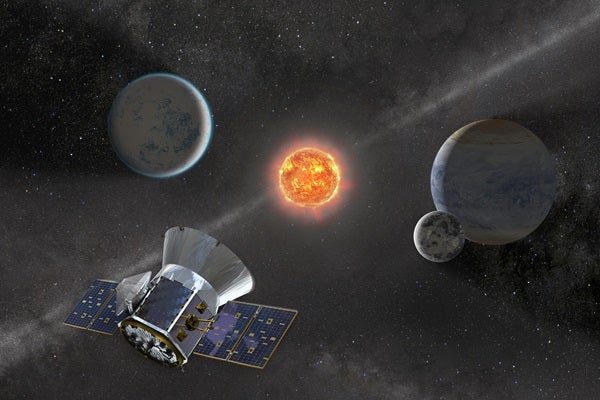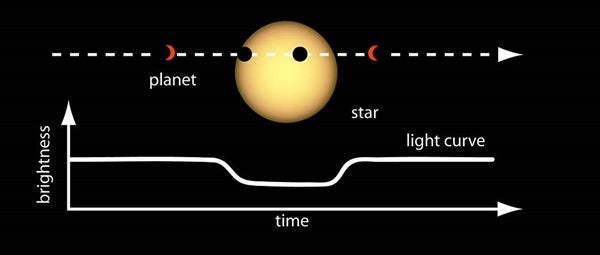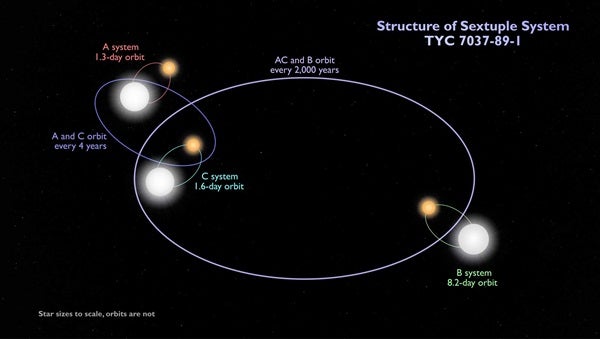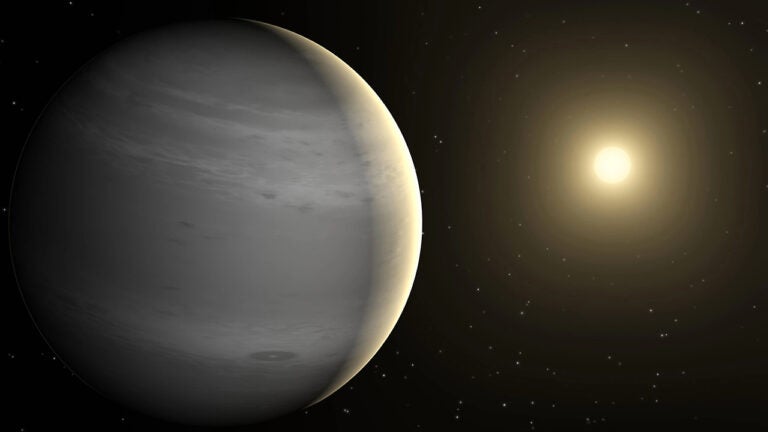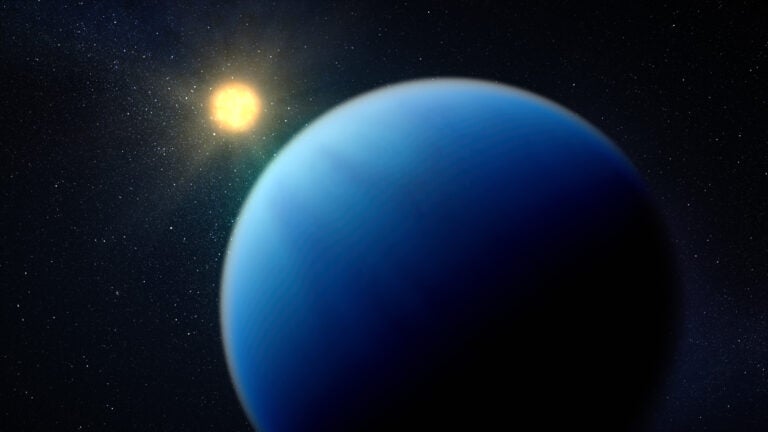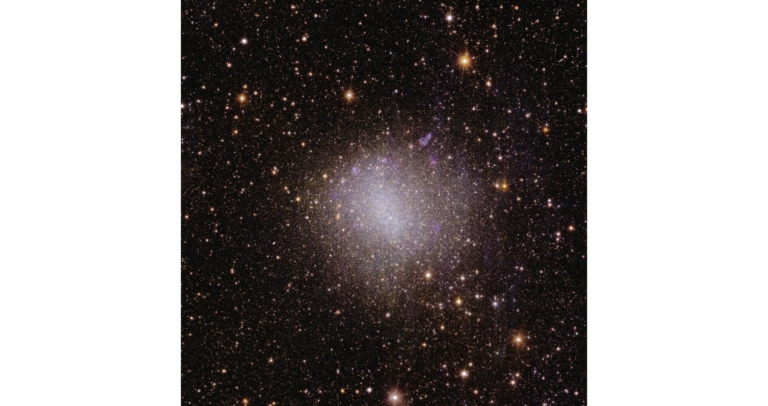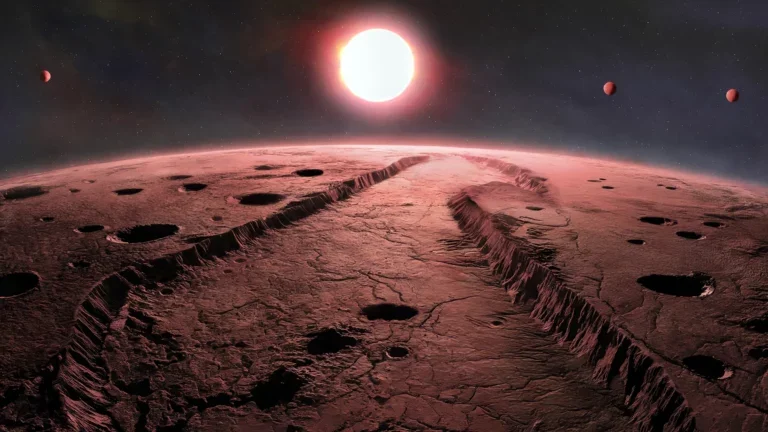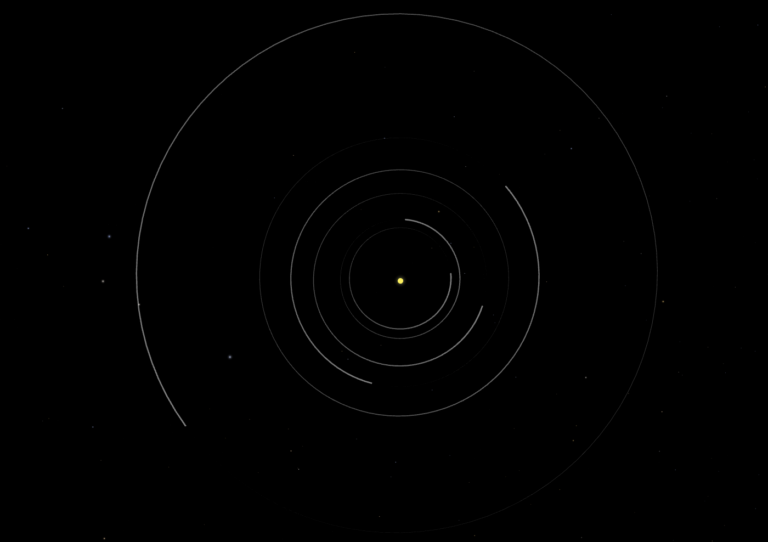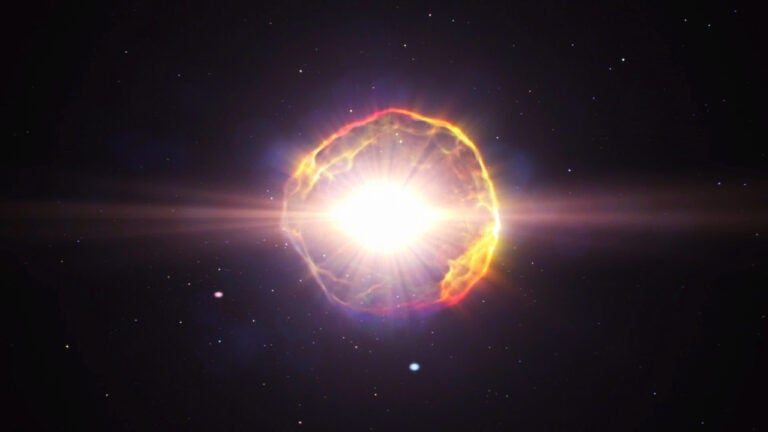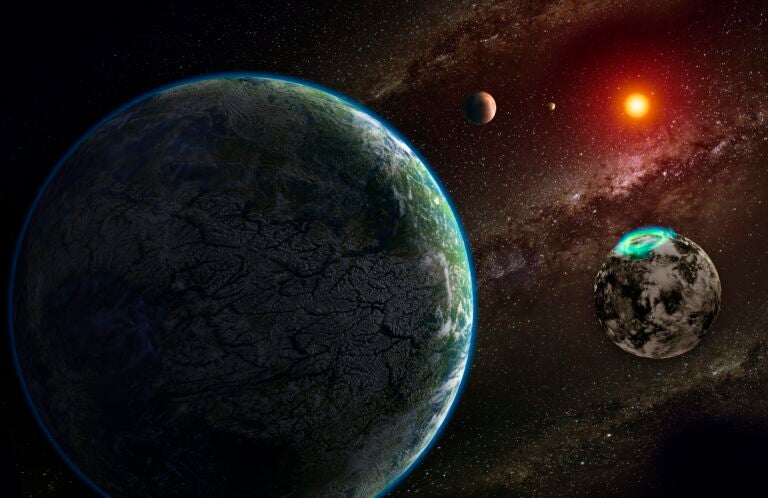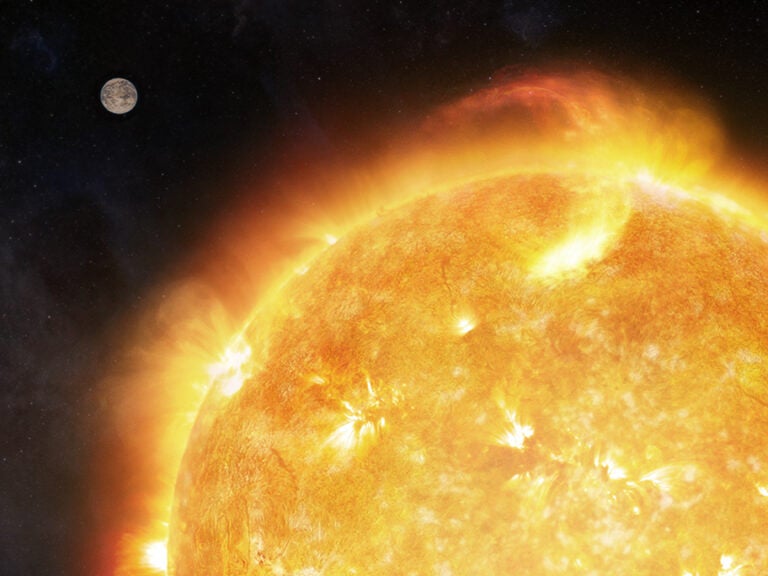NASA’s Transiting Exoplanet Survey Satellite, TESS, has identified more than 2,000 potential exoplanets in our local region of the Milky Way. Launched in 2018, TESS has already surveyed almost the entire sky once, and it’s now on its second pass. But along the way, TESS has also serendipitously found several objects that aren’t planets, highlighting its value as a multidisciplinary mission. (A list at the end of this article outlines some of the best non-planetary TESS finds.)
Among those unexpected finds is a recent gamma-ray burst (GRB), which TESS spotted in October 2020. GRBs are short-lived but powerful explosions that astronomers believe occur either when a massive star explosively dies or when two neutron stars merge. In both cases, the result is a black hole. These events release as much energy in a few seconds or minutes as the Sun puts out over its entire lifetime.
Another NASA telescope, Swift-BAT, discovered this GRB first. But Swift-BAT was unable to follow up on the blast immediately after its detection because it occurred too close to the Moon. Fortunately, TESS happened to be staring at just the right part of the sky — unhindered by the Moon from its viewpoint — and caught the event by sheer luck. TESS recorded the burst, which grew as bright as magnitude 15.1 for several minutes before it faded away. But that brief window of observation was crucial, providing astronomers with the data needed to calculate the GRB’s distance — nearly 12 billion light-years — among other things.
“Our findings prove this TESS telescope is useful not just for finding new planets, but also for high-energy astrophysics,” said Krista Lynne Smith of Southern Methodist University in Dallas, Texas, in a press release. Smith led the work on the GRB, which was published April 14 in The Astrophysical Journal.
Planets aren’t everything
TESS hunts for planets by staring at nearby stars in a single patch of the sky for roughly 28 days straight. It then repeats the process for another patch of sky. Over the course of two years, the satellite steps through the entire Northern and Southern Hemispheres. While focused on a single sector, TESS takes frequent images, hoping to catch planetary transits. These occur when an exoplanet passes in front of its host star from our point of view, slightly dimming the star’s brightness.
Utilizing this technique means TESS excels at detecting other transient events, too, such as supernovae, stellar flares, asteroids, and comets. It’s also perfect for spotting binary star systems, which can transit just like planets. As TESS observations are sent back to Earth, they pass through a computerized pipeline that identifies objects and events of interest, which researchers can then quickly follow up on.
Even before the mission started science operations, while still testing its systems, TESS captured images of Comet C/2018 N1 (NEOWISE) streaking through the constellation Piscis Austrinus. In its first month of official observations, which covered the first of 26 total sectors of the sky, TESS spotted dozens of transient events, including six supernovae (all in other galaxies). That’s as many supernovae as the now-defunct Kepler space telescope — which also looked for planetary transits but did so in only a single small region of the sky — found in four years.
Although these finds don’t add to the known catalog of exoplanets, they still provide astronomers with vital data about our universe. Below is a list of some of TESS’s other notable non-planetary discoveries, of which we should expect many more:
TYC 7037-89-1: Earlier this year, TESS discovered TYC 7037-89-1 (also called TIC 168789840), located about 1,900 light-years away in the constellation Eridanus. This unique six-star system comprises three eclipsing binaries, meaning every star in the system undergoes eclipses as seen from Earth.
Luhman 16B: Also announced earlier this year, a University of Arizona-led team used TESS observations of brightness changes on the brown dwarf Luhman 16B to conclude that the failed star has a banded, Jupiter-like appearance. Like the planet, Luhman 16B is covered with high-speed jet streams that whisk clouds through its atmosphere.
Comet 46P/Wirtanen: TESS’s unique observing style was the perfect way for astronomers to watch Comet 46P/Wirtanen swing near the Sun in late 2018. The satellite captured an outburst of ice, dust, and gas from the comet as it was heated by our star, providing the most comprehensive picture of this type of event to date.
ASASSN-14ko: ESO 253–3 is a galaxy with an active supermassive black hole that belches out flares every 114 days. Researchers combined data from TESS with that of other telescopes to study these outbursts, which they now believe occur as the black hole slowly nibbles away at an orbiting star each time it gets too close.
Exocomet around Beta Pictoris: Beta Pictoris is a young star that’s relatively famous for its large protoplanetary disk of gas and dust — the precursor to planets. But in 2019, researchers announced TESS had found something else orbiting the star: an exocomet. The detection provided compelling proof for a 20-year-old prediction of how a comet around another star would appear in observational data.

